预约演示
更新于:2025-12-09

Kyungpook National University
更新于:2025-12-09
概览
标签
肿瘤
皮肤和肌肉骨骼疾病
其他疾病
小分子化药
合成多肽
诊断用放射药物
疾病领域得分
一眼洞穿机构专注的疾病领域
暂无数据
技术平台
公司药物应用最多的技术
暂无数据
靶点
公司最常开发的靶点
暂无数据
| 排名前五的药物类型 | 数量 |
|---|---|
| 小分子化药 | 11 |
| 合成多肽 | 4 |
| 诊断用放射药物 | 2 |
| 多肽偶联药物(PDC) | 2 |
| 造影剂 | 1 |
关联
21
项与 Kyungpook National University 相关的药物作用机制 HNRNPA2B1 inhibitors |
在研适应症 |
非在研适应症- |
最高研发阶段临床前 |
首次获批国家/地区- |
首次获批日期- |
靶点 |
作用机制 PDK4 inhibitors |
非在研适应症- |
最高研发阶段临床前 |
首次获批国家/地区- |
首次获批日期- |
作用机制 TAK1 subfamily inhibitors |
在研适应症 |
非在研适应症- |
最高研发阶段临床前 |
首次获批国家/地区- |
首次获批日期- |
12
项与 Kyungpook National University 相关的临床试验KCT0010281
Effects of an mHealth Mindfulness Program for High-Risk Pregant Women in the Community
开始日期2025-03-24 |
KCT0010378
Usability testing of nurse scheduling program accommodating individual needs
开始日期2025-01-16 |
KCT0009686
Validating the feasibility and effects of an mHealth mindfulness-based psycho-emotional support app for hospitalized high-risk pregnant women
开始日期2024-08-05 |
100 项与 Kyungpook National University 相关的临床结果
登录后查看更多信息
0 项与 Kyungpook National University 相关的专利(医药)
登录后查看更多信息
24,463
项与 Kyungpook National University 相关的文献(医药)2026-01-01·Neural Regeneration Research
Uncovering optogenetic and chemogenetic induction of cognitive deficits: Efficient techniques for manipulating and observing specific neural activities
Article
作者: Suk, Kyoungho
aberrant activation of hippocampal astrocytes appears to impair excitatory synaptic transmission and cognitive function.LCN2 released from reactive astrocytes in the inflamed hippocampus may mediate these synaptic alterations.Targeting astrocyte pathways and/or LCN2 could offer new therapeutic approaches to treat cognitive decline in diverse central nervous system conditions.Repeated and prolonged stimulation of astrocytes leads to a reactive astrocyte phenotype through an LCN2-dependent mechanism, resulting in reduced synaptic plasticity and cognitive impairment.Finally, future studies need to offer an improved definition of the astrocyte- microglia crosstalk in mol. terms.Under neuroinflammatory conditions, reactive astrocytes inevitably ensue microglial activation and vice versa.Communication between these glial cells via various regulatory mediators likely governs the overall extent of neuroinflammation and shapes consequent behavioral responses, including learning and memory.
2026-01-01·JOURNAL OF NUTRITIONAL BIOCHEMISTRY
D-Allulose improves mitochondrial respiratory function and alleviates obesity-induced liver dysfunction: A comparative study with erythritol in HFD-Fed mice
Article
作者: Bae, Heekyong R ; Shin, Su-Kyung ; Kwon, Eun-Young ; Kim, Eun Ji ; Choi, Sung-Su ; Lee, JaeHyuck
This study investigated the anti-obesity and anti-inflammatory effects of D-Allulose compared to erythritol in high-fat diet (HFD)-fed mice, focusing on liver mitochondrial function. Both D-Allulose and erythritol significantly reduced body weight gain, white adipose tissue (WAT) weight, and plasma lipid levels. D-Allulose, especially at higher doses (H_AL), demonstrated superior effects, including reductions in visceral and total WAT weight, adipocyte size, and hepatic and WAT fibrosis, compared to erythritol. D-Allulose also significantly enhanced mitochondrial function, as shown by increased expression of genes and proteins related to lipolysis and oxidative phosphorylation, which were not observed in the erythritol group. Gene expression analysis revealed that D-Allulose more effectively restored HFD-altered gene expression, suggesting stronger regulation of obesity-induced metabolic and inflammatory processes. These findings highlight D-Allulose as a functional sweetener with superior anti-obesity and anti-inflammatory effects, primarily through improved mitochondrial function and modulation of immune and metabolic responses.
2026-01-01·MARINE POLLUTION BULLETIN
Photodegradation of PET plastics produces persistent compounds that accumulate in sediments
Article
作者: Shafique, Imran ; Shim, Woon Joon ; Ahmad, Raees ; Son, Seungwoo ; Hwang, Eonjin ; Kim, Sunghwan
Polyethylene terephthalate (PET) is one of the most widely used plastics, particularly in packaging and textiles. Although PET is widely used in consumer products, only 10-28 % is recycled. Most PET waste is not properly managed. It is often landfilled, burned, or simply discarded, eventually making its way into rivers and drainage systems and accumulating in marine ecosystems. In addition to hydrolytic degradation, PET is particularly susceptible to photodegradation, as its UV-absorbing aromatic rings facilitate backbone cleavage and the formation of lower-molecular-weight compounds. While microplastic formation has been widely studied, far less attention has been given to the polar, water-soluble degradation products-despite their potential for high mobility and bioavailability. In this study, PET photodegradation was simulated under controlled marine-like conditions. Using ultra-high-performance liquid chromatography coupled with high-resolution mass spectrometry, 17 degradation products were identified, five of which confirmed with authentic standards. Laboratory-based simulations indicated that the global annual release of these compounds could range from 1 to 5.5 tons, suggesting potential environmental accumulation. To verify this, targeted environmental analyses were conducted, detecting PET-derived degradation products in marine sediments collected from Ganggu Port, South Korea. This study reveals overlooked polar byproducts of PET photodegradation and highlights their relevance in assessing plastic pollution in marine environments.
3
项与 Kyungpook National University 相关的新闻(医药)2024-07-24
WEDNESDAY, July 24, 2024 -- Use of oral corticosteroids for >90 days during one year is associated with a slightly increased risk of adverse events (AEs), according to a study published online July 19 in
JAMA Network Open
.
Yong Hyun Jang, M.D., Ph.D., from Kyungpook National University in Daegu, South Korea, and colleagues examined the association between long-term exposure to oral corticosteroids and occurrence of 11 AEs among adult patients with atopic dermatitis. Analysis included 164,809 cases and 328,303 controls.
The researchers found that 3.4 percent of cases and 3.2 percent of controls were exposed to oral corticosteroids for >30 days, while 0.4 percent in both groups were exposed to oral corticosteroids for >90 days. There was no increased risk of AEs with use of oral corticosteroids for >30 days (adjusted odds ratio, 1.00; 95 percent confidence interval, 0.97 to 1.04). However, the risk was higher with use of oral corticosteroids for >90 days (adjusted odds ratio, 1.11; 95 percent confidence interval, 1.01 to 1.23). For each cumulative or consecutive year of ever long-term use, there was a small elevation of risk for experiencing an AE.
"This study suggests that for patients with exacerbations of atopic dermatitis, limiting the duration of oral corticosteroid treatment to 90 days or less may limit adverse effects," the authors write.
Several authors disclosed ties to the pharmaceutical industry.
Abstract/Full Text
Whatever your topic of interest,
subscribe to our newsletters
to get the best of Drugs.com in your inbox.
临床结果
2024-03-04
A collaborative team of researchers developed an implant coating triggering antibiotic release in response to bacterial infection.
Degenerative arthritis is no longer exclusive to the elderly population. According to the National Health Insurance Service report covering the years from 2012 to 2022, there has been a 22.8% increase in the prevalence of degenerative arthritis among people in their 20s and 30s. This rise is attributed to prolonged periods of desk sitting and the excessive lifting of heavy sports equipment, both of which can lead to significant cartilage damage. While artificial joints are a common treatment, bacterial infections have posed challenges. However, a recent study has proposed an intriguing solution involving the use of mussels.
A collaborative research team, comprising of Professor Hyung Joon Cha from the Department of Chemical Engineering and the School of Convergence Science and Technology and Dr. Hyun Sun Choi from the Department of Chemical Engineering at Pohang University of Science and Technology (POSTECH), and Professor Yun Kee Jo from the Department of Biomedical Convergence Science and Technology of the College of Advanced Technology Convergence at the Kyungpook National University, has successfully developed a coating material for implants. This material, based on mussel adhesion proteins, is designed to release antibiotics in response to bacterial invasion. The research has been recently published in the online edition of Biomaterials, a prominent international journal in the field of biomaterials.
In implant procedures, bacterial infections not only compromise the stability of the implant but also give rise to various complications. Moreover, highly antibiotic-resistant bacteria often lead to recurrent infections even after antibacterial treatment, requiring additional procedures. While there has been active exploration of implant coating materials with antibiotics, numerous challenges have emerged including physical damage to the material during the procedure and potential leakage of antibiotics inside.
In this research, the team directed their attention to DOPA, one of the amino acids found in mussel adhesion proteins. DOPA, crucial for the robust adhesion observed in mussels, forms potent bonds with metal ions. Its interaction with ferrous metal ions is notable because it weakens as the acidity (pH) decreases. Recognizing that bacterial invasion alters the body's acidity, the team developed a novel implant coating material.
This material contains antibiotics under normal conditions, but in the event of a bacterial infection and subsequent acidification, it releases 70 percent of the antibiotics within eight hours, effectively eliminating the bacteria. Notably, the material exhibits remarkable durability, showcasing immediate antibacterial efficacy even during the bone regeneration phase (approximately four weeks) following the implant procedure.
The quantity of antibiotics discharged by the material corresponds to the extent of bacterial infection, and the researchers additionally validated the antibacterial efficacy of the coating material based on varying bacterial concentrations. Particularly, the bond between DOPA and iron ions showed remarkable resilience to external physical stimuli, rendering it resistant to abrasion and mechanical loads encountered during the implantation process.
Professor Hyung Joon Cha of the POSTECH who led the study expressed his expectation by saying, "The immediate and sustained antimicrobial effect of the adhesive implant coating material has the potential to significantly enhance the success rate of implant procedures." Professor Yun Kee Jo of the Kyungpook National University added, explaining the significance of the research, "By releasing antibiotics selectively in response to actual need, this could represent a groundbreaking technology in preventing the emergence of superbacteria in the future."
The research was conducted with support from the Korea Health Technology R&D Project and the Dentistry Technology R&D Project of the Ministry of Health and Welfare, the Mid-Career Research Program and the Young Researcher Program of the Ministry of Science and ICT, and POSCO Holdings.
2023-03-13
Scientists have developed an osteogenic barrier coating material that maximizes the effect of guided bone regeneration (GBR) for implant placements.
One of the key factors of success in a dental implant is the condition of the periodontium around the implant. A higher long-term success rate of dental implants requires sufficient and healthy alveolar bone. In those cases where lack of alveolar bone renders setting an implant difficult, the bone should be regenerated sufficiently to receive the implant, whether before or during the implant surgery. Development of osteogenic barrier coating material for implants by a Korean research team is expected to improve the success rate of alveolar bone grafting.
Three research teams led by Professor Hyung Joon Cha of the Chemical Engineering Department at Pohang University of Science and Technology (POSTECH), Professor Yun Kee Jo of the School of Convergence at Kyungpook National University (KNU), and Professor Sang Ho Jun of the Department of Oral and Maxillofacial Surgery at Korea University Anam Hospital together developed an osteogenic barrier coating material for dental implants that prevents the invasion of soft tissue cells, attracts osteo-progenitor cells including bone stem cells, and sustainably releases the loaded bone morphogenetic protein-2 (BMP-2), significantly facilitating bone regeneration.
GBR is widely used in dental implant placement. It maintains the space for bones to grow and prevents cells other than osteogenic cells, such as fibroblasts, from populating the bone defect sites, allowing the bone to grow without interference by non-osteogenic cells. However, the GBR approach is still less likely to be successful and requires longer treatment time for those patients with insufficient bone quantity and quality. Depending on the configurations of defect sites, preventing the invasion of the non-osteogenic cells by using barrier membranes alone is not enough to significantly facilitate the bone regeneration.
The joint research team first loaded BMP-2 on top of the bioengineered material where RGD peptide, cell recognitive motif that is capable of attracting cells, is fused with mussel adhesive protein (MAP) that maintains strong adhesiveness in a wet environment. The team then coated the titanium mesh (Ti-mesh) membrane with it. According to the research findings, the coated barrier membrane exhibited cell occlusivity where fibroblasts could not permeate the membrane. The team also found that it induced a high level of bone differentiation in a short period of time inside the membrane by means of high growth of mesenchymal stem cells and release of BMP-2.
Application of the developed MAP-based barrier coating for guided bone regeneration to a titanium membrane in a rat calvarial defect model showed that the coating roughly doubled the speed of bone tissue regeneration.
Professor Hyung Joon Cha who led the research said, "This research was conducted based on long-term research cooperation of the joint research team in the area of bone regeneration for implant placement. Its findings revealed the possibility of improving the success rate of implant treatment regardless of the bone condition." He added that the research findings could also be applied to regenerate a variety of hard tissues.
The research findings were published in the online edition of the Bioengineering & Translational Medicine, a distinguished journal in the field of bioengineering and regenerative medicine. The study was conducted as a part of the Dentistry Technology R&D Project under the Korea Health Technology R&D Project funded by the Ministry of Health & Welfare, the High Value-added Food Technology Development Program funded by the Ministry of Agriculture, Food & Rural Affairs, and the BK21 Four Program by the National Research Foundation of Korea.
100 项与 Kyungpook National University 相关的药物交易
登录后查看更多信息
100 项与 Kyungpook National University 相关的转化医学
登录后查看更多信息
组织架构
使用我们的机构树数据加速您的研究。
登录
或
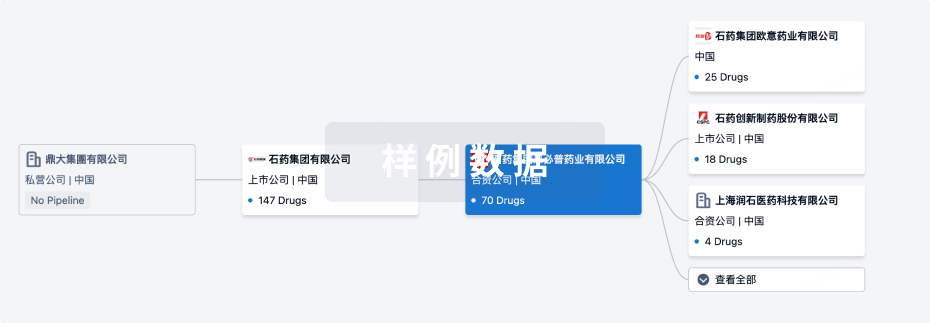
管线布局
2025年12月11日管线快照
管线布局中药物为当前组织机构及其子机构作为药物机构进行统计,早期临床1期并入临床1期,临床1/2期并入临床2期,临床2/3期并入临床3期
药物发现
1
20
临床前
其他
6
登录后查看更多信息
当前项目
| 药物(靶点) | 适应症 | 全球最高研发状态 |
|---|---|---|
KP-A038 ( RANK ) | 骨质疏松症 更多 | 临床前 |
3-DSC ( HMGB1 x factor Xa x thrombin ) | 炎症 更多 | 临床前 |
64Cu-PCB-TE2A-Tz ( HNRNPA2B1 ) | 三阴性乳腺癌 更多 | 临床前 |
胡椒碱 ( MAO-B x PXR ) | 胶质母细胞瘤 更多 | 临床前 |
PD-L1Pep-1-K ( PDL1 ) | 肿瘤 更多 | 临床前 |
登录后查看更多信息
药物交易
使用我们的药物交易数据加速您的研究。
登录
或
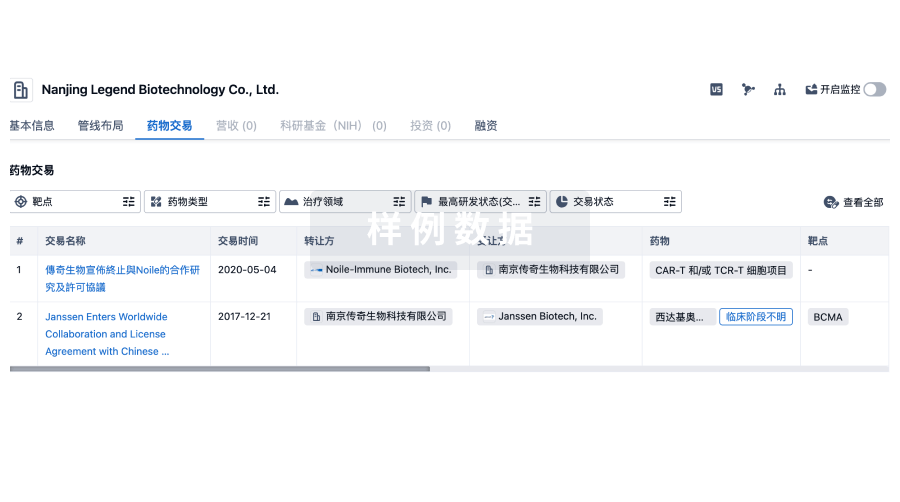
转化医学
使用我们的转化医学数据加速您的研究。
登录
或
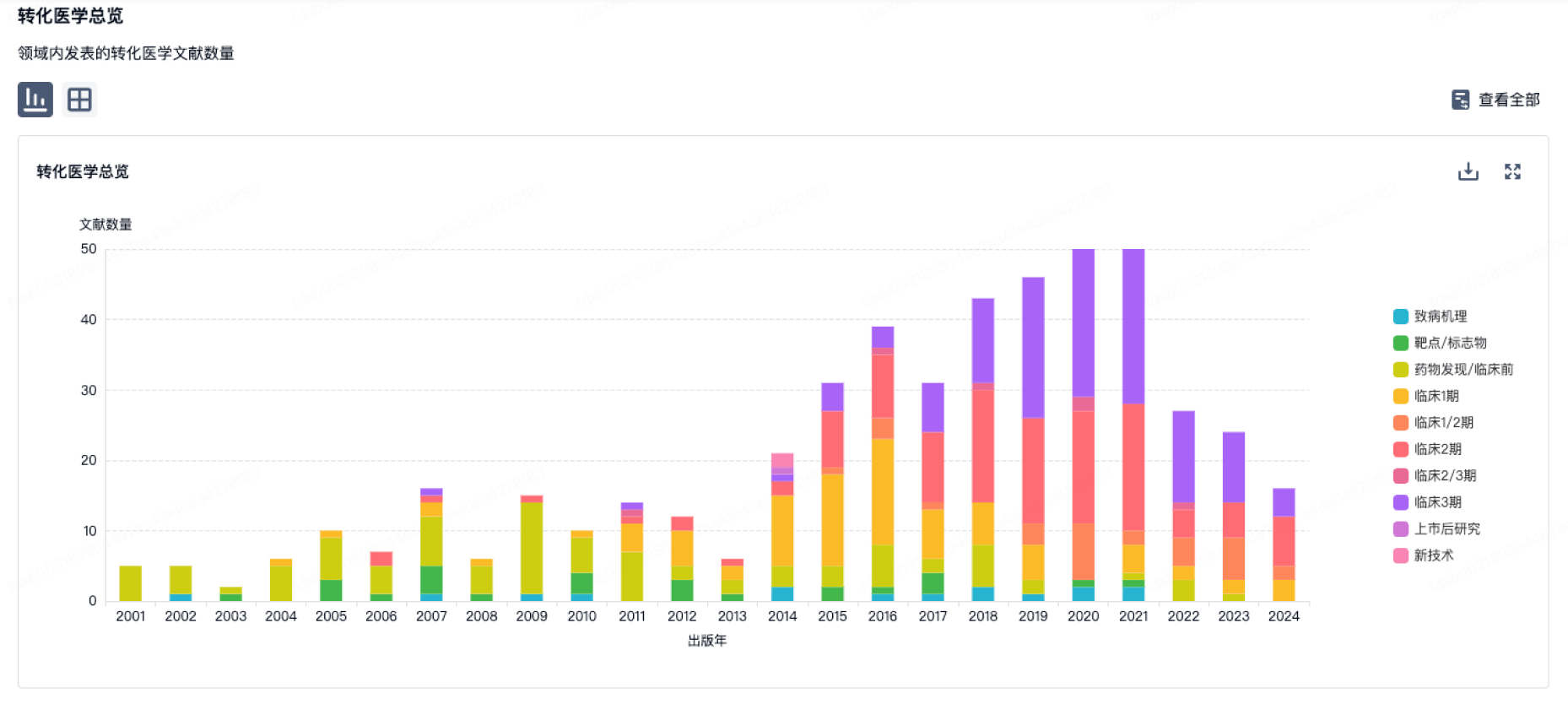
营收
使用 Synapse 探索超过 36 万个组织的财务状况。
登录
或
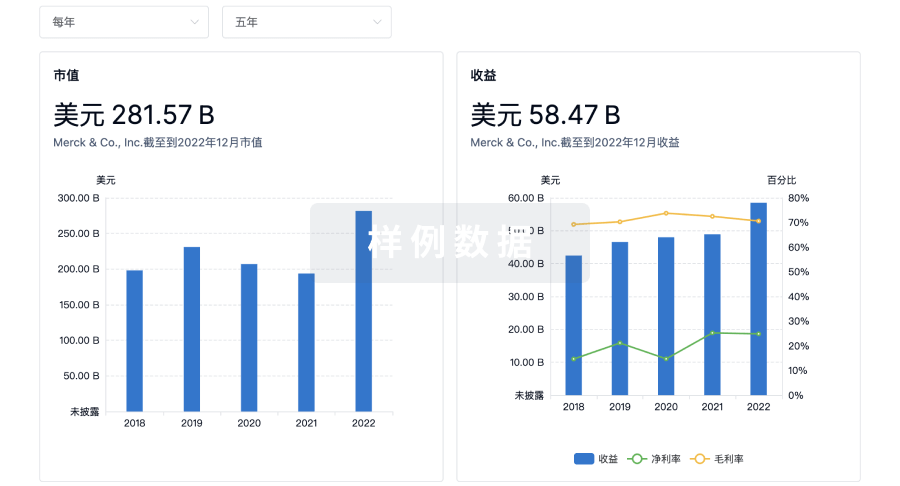
科研基金(NIH)
访问超过 200 万项资助和基金信息,以提升您的研究之旅。
登录
或
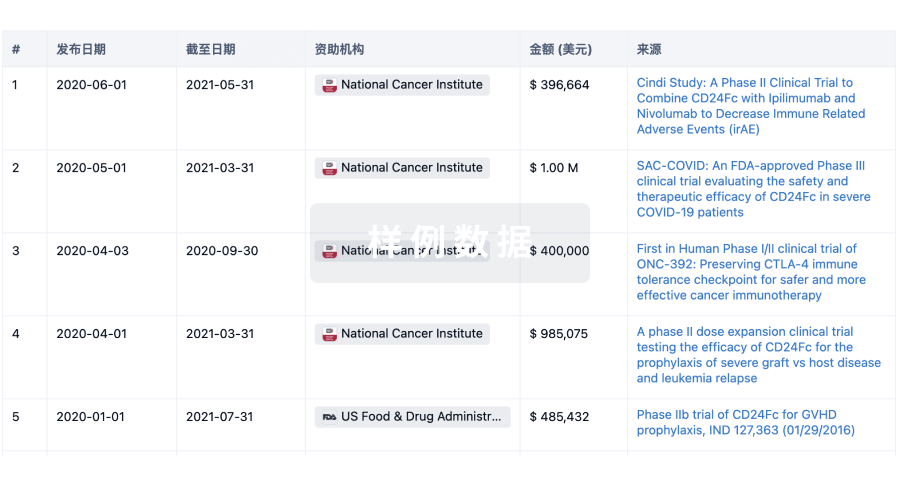
投资
深入了解从初创企业到成熟企业的最新公司投资动态。
登录
或
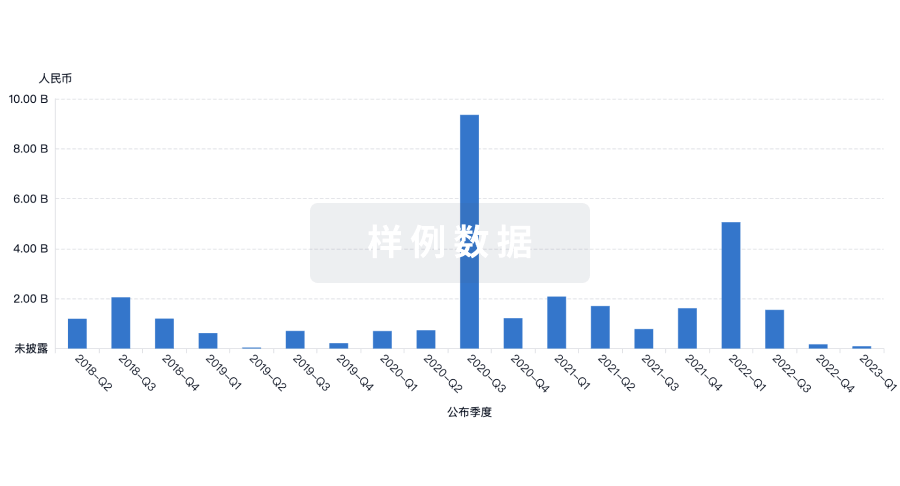
融资
发掘融资趋势以验证和推进您的投资机会。
登录
或
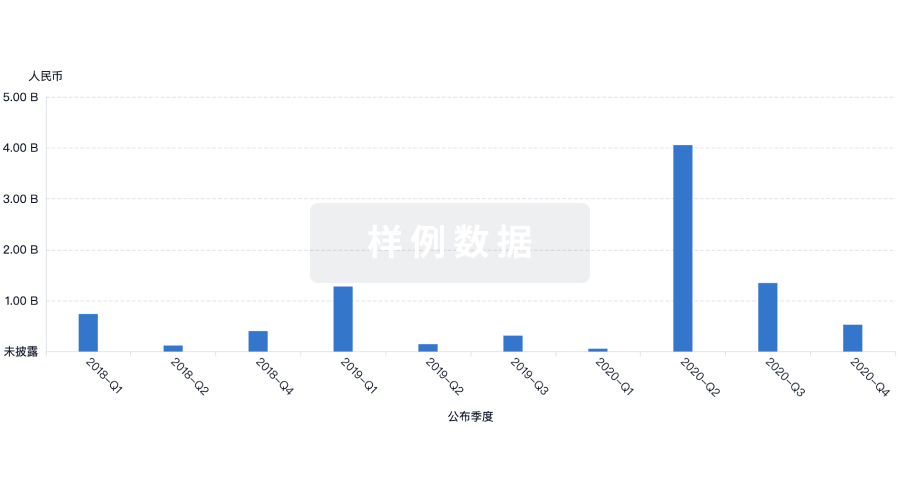
生物医药百科问答
全新生物医药AI Agent 覆盖科研全链路,让突破性发现快人一步
立即开始免费试用!
智慧芽新药情报库是智慧芽专为生命科学人士构建的基于AI的创新药情报平台,助您全方位提升您的研发与决策效率。
立即开始数据试用!
智慧芽新药库数据也通过智慧芽数据服务平台,以API或者数据包形式对外开放,助您更加充分利用智慧芽新药情报信息。
生物序列数据库
生物药研发创新
免费使用
化学结构数据库
小分子化药研发创新
免费使用